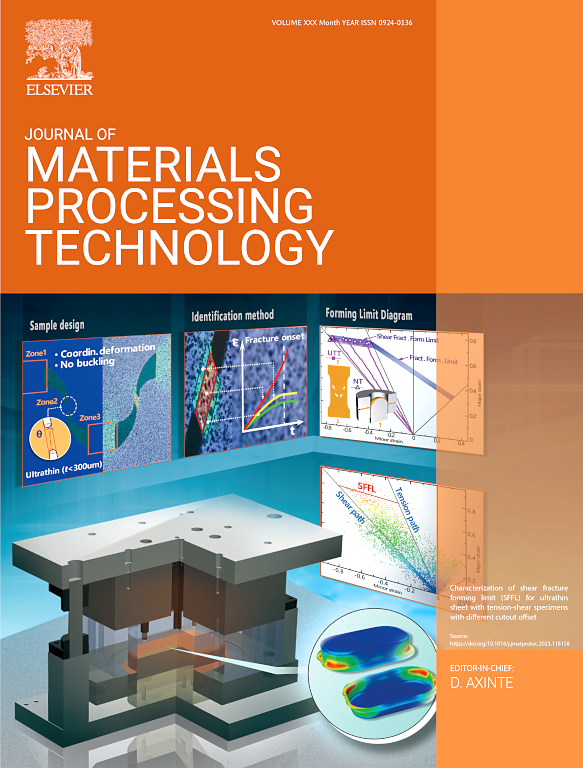A novel electromagnetic self-pierce upsetting riveting with flat die for joining ultra-high strength steel and aluminum structures
IF 6.7
2区 材料科学
Q1 ENGINEERING, INDUSTRIAL
Journal of Materials Processing Technology
Pub Date : 2025-02-01
DOI:10.1016/j.jmatprotec.2024.118691
引用次数: 0
Abstract
Ultrahigh-strength steel (UHSS) is a promising material that can decrease sheet thickness and increase automobile safety. However, joining UHSS with aluminum alloys poses significant challenges to existing joining processes, such as self-piercing riveting (SPR), which often leads to rivet upsetting owing to the high strength of UHSS. This study proposes a novel joining process called electromagnetic self-pierce-upsetting riveting (ESP-UR). This method combines the piercing of a semi-hollow rivet leg in SPR with the upsetting of a rivet shank in traditional riveting, utilizing a novel rivet designed for high-strength and low-ductility steel. The effectiveness of the ESP-UR process was validated through riveting experiments involving 1.5-mm-thick 22MnB5 UHSS and 2.0-mm-thick 5052 aluminum sheets. A numerical experimental analysis and microstructural characterization were performed to characterize the joint formation mechanism. The results indicated that small protrusions created by the short rivet leg embedded in the lower sheet were compensated for by rivet cavities, resulting in a flat bottom surface of the joint. Furthermore, the hole diameter positively influenced the strength of the ESP-UR joint, with joints featuring a hole diameter of 5.8 mm exhibiting an 8.5 % increase in shear strength compared to those with a 5.6-mm diameter under a stroke of 5.0 mm. Additionally, the failure modes were analyzed and discussed. These findings provide theoretical guidance for optimizing stroke and hole diameter designs in future engineering applications.
求助全文
约1分钟内获得全文
求助全文
来源期刊

Journal of Materials Processing Technology
工程技术-材料科学:综合
CiteScore
12.60
自引率
4.80%
发文量
403
审稿时长
29 days
期刊介绍:
The Journal of Materials Processing Technology covers the processing techniques used in manufacturing components from metals and other materials. The journal aims to publish full research papers of original, significant and rigorous work and so to contribute to increased production efficiency and improved component performance.
Areas of interest to the journal include:
• Casting, forming and machining
• Additive processing and joining technologies
• The evolution of material properties under the specific conditions met in manufacturing processes
• Surface engineering when it relates specifically to a manufacturing process
• Design and behavior of equipment and tools.
 求助内容:
求助内容: 应助结果提醒方式:
应助结果提醒方式:


